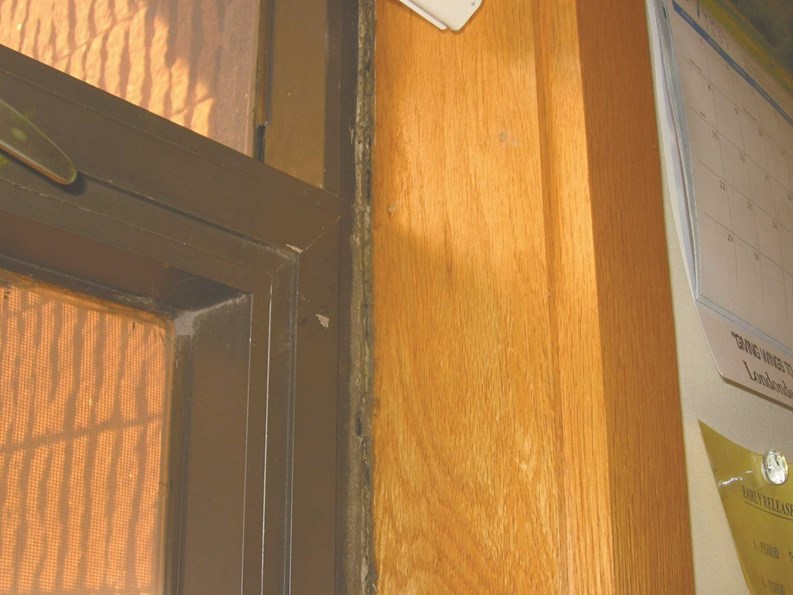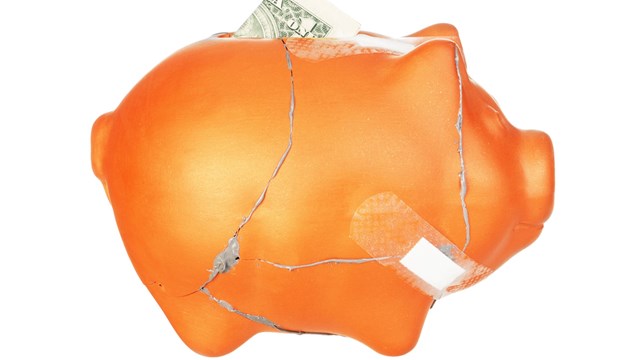Condominium associations and their property managers have shown that, like owners of other types of buildings, they are eager to do their part to be good stewards of the health of the planet, as well as the health of the occupants of their buildings.
They have implemented recycling programs, installed energy-saving compact fluorescent lights (CFLs), added insulation and replaced weatherstripping on their buildings, and swapped out old appliances for newer energy-efficient models. These types of actions help us all to do our part to reduce our impact to the natural environment. In most cases these practices, either directly or indirectly, also increase our potential for living healthy lives by reducing our exposure to pollution and associated contaminants.
But for some buildings, there is another source of contamination that is currently unknown to the owners and occupants. This contamination source, discovered by environmental industry experts only in recent years, threatens the health of owners and users of these buildings.
So what is the source of this contamination that condominium owners and their property managers need to be aware of? It’s an old caulking material that was applied to buildings during their construction or renovation.
Caulk Banned by EPA
Prior to the early 1980s, caulk that was used to seal window frames, door frames, and masonry control joints commonly contained high levels of polychlorinated biphenyls (PCBs), which manufacturers added to caulk to give it elasticity. Based on evidence suggesting that PCBs are developmental toxins, and due to their other toxic effects, PCBs were banned in the United States in 1977. The Environmental Protection Agency (EPA) has stated that exposure to PCBs can adversely affect a person’s immune system, reproductive system, nervous system, and endocrine system. In addition, PCBs are considered to be a potential cause of cancer in humans.
Condominiums that were constructed or refurbished prior to the late 1970s and even into the early 1980s (due to excess inventory of caulk) have a good chance of containing PCB caulk, especially those constructed with brick, concrete block, or other masonry materials. For example, if a condominium building was once an old mill that was renovated for residential units or office suites in the 1970s, there is a good chance that PCB caulk was applied throughout the building at the time of the renovation.
For these buildings, studies have shown that PCBs can leach out of the caulk and contaminate the adjacent building material (such as concrete and brick) and the environment surrounding the building, including soil, sediment, and water bodies. Once in the environment, PCBs can be contacted, ingested, or inhaled in dust. Studies have also shown that PCBs originating from caulk can be released into a building’s indoor air and be inhaled by the building occupants. Obviously, this is a concern to parents of children living in the building, but also to adult residents, visitors, and pets.
The Harvard School of Public Health and other researchers have confirmed the presence of high levels of PCBs in building caulk in a number of buildings in the Boston area and internationally. There is also evidence that the problem affected many buildings nationwide, including in the metro New York-New Jersey area.
Thus, occupants and workers in buildings with PCB caulk risk exposure to PCBs. Contractors working on or in these buildings may be at risk, particularly if they come in contact with PCB-contaminated building materials during construction or other work activities. Therefore, if remediation of PCB-contaminated materials in your condominium buildings and the surrounding environment is planned, it must be done thoughtfully and carefully to avoid exacerbating the situation.
Disposal of the more heavily PCB-contaminated caulk and associated impacted building materials must be handled as hazardous waste in accordance with federal regulations. However, not all of the PCB-contaminated caulk or building materials fall into this category.
Proper characterization and remedial alternatives evaluation are critical to classifying the waste appropriately, thereby minimizing investigation and remedial costs. A sampling protocol needs to be developed to ensure proper characterization of potential PCB-contaminated material. In some cases, soil and sediment in the environment adjacent to buildings that contain PCB-contaminated caulk and concrete may be contaminated at levels requiring remediation to prevent unacceptable human health and environmental risks.
Again, proper characterization of the environment around these buildings is critical to controlling costs and a proper evaluation of remedial alternatives is important to selecting an appropriate cleanup method.
Clearly, the implications for condominium properties impacted by PCBs resulting from contaminated caulk can be serious. It is important to engage qualified professionals to characterize: 1) the presence and concentrations of PCBs in the interior and exterior areas of these buildings; 2) the potential environmental and human health risks; and 3) the financial liabilities associated with eliminating the PCB contamination and associated risk.
If sampling reveals elevated levels of PCB are present, your qualified professional can then determine what type of method is most appropriate to safely and efficiently remediate the PCB-contaminated material in accordance with federal and state regulatory requirements, with minimal disruption to building occupants.
Remediation Can Cost Thousands
For most buildings, depending on the size, type of construction, age, and use of the property, the cost for the initial assessment and sampling program to determine if PCB caulk exists and, if so, at what levels, can range from a few thousand dollars to $10,000 or more.
If the sampling program indicates PCB caulk is present and remediation is warranted, the remediation costs can range from tens of thousands to well into the hundreds of thousands of dollars. The actual cost to remove and/or remediate PCB-contaminated caulk and associated material will depend on the quantity of material and the level of PCB contamination identified during the sampling program.
Insurance companies started excluding pollution coverage from their standard property insurance packages in the mid 1980s. However, if your condominium association has a Pollution Legal Liability policy to insure against unanticipated pollution losses, coverage for PCB remediation may be available. In addition, if you can produce records showing that the insurance policy which was in place at the time PCB caulk was applied to the building (pre-1980s) did not include the pollution exclusion language, insurance could be available via the former policy.
By undertaking proper assessment of condominium properties potentially impacted by PCBs, currently undiscovered health risks and liabilities may be able to be identified. If you feel your condominium building may be a candidate for contamination from PCB caulk, have your association consider retaining an environmental consultant with expertise and experience in this area to determine if your property is contaminated with PCBs, expedite proper remediation of the PCB caulk and other areas it may have contaminated, and reduce your liabilities associated with this recently-discovered health threat.
Russell P. Lagueux, P.E., is a principal at the Londonderry, New Hampshire office of EnviroSense, Inc., an environmental consultant. He can be reached at rlagueux@EnviroSense.com.







Leave a Comment